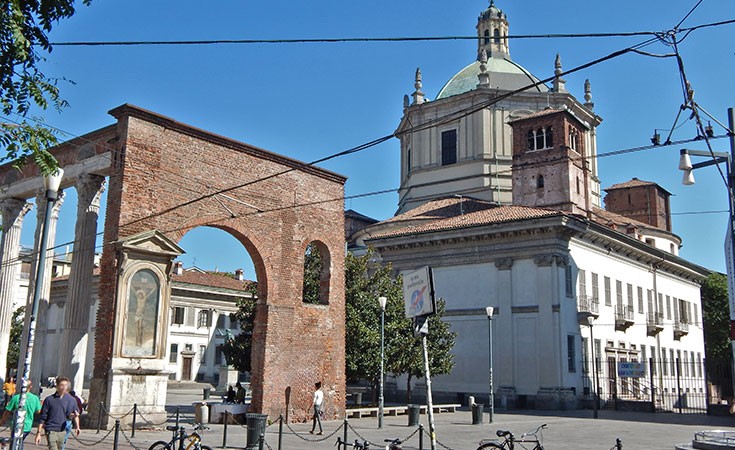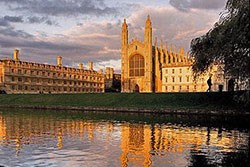
The Basilica of San Lorenzo is one of the oldest churches in Milan and it dates back to the Roman period. Even though the columns in front of it (called Colonne di San Lorenzo) were brought to this place in the midlevel period, the columns themselves are even older than the church. Apart from its historical significance it is also an area where there are a lot of bars and restaurants and it is a very popular nightlife zone.
This is a very well- known area where people choose to go out especially during the summer period. During the day but especially during the night, many young people will enjoy their drinks all around the square between Basilica di San Lorenzo and Colonne di San Lorenzo. The square is surrounded with bars, but many will just choose to buy drinks and then find a place where to sit in the square, creating a unique sight for the newcomers in Milan.
Basilica di San Lorenzo
It is a very important monument for Catholics and one of the oldest churches in Milan. It remains the symbol of the Roman Imperial heritage especially from 1154 and Barbarossa’s destruction of other cultural monuments.
The basilica was constructed between the end of 4th and the beginning of 5th century (during the Roman period). The circumstances such as the date when the construction began and who commissioned the construction have remained unknown. The temple was dedicated to San Lorenzo only in 590 when Milan was already under the Lombard rule.
At first sight, the complex may look a bit overwhelming - one main structure around which many others have been placed. The reason for this is the fact that the main building represents the nucleus around which the constructions of secondary purpose were placed. One of these constructions is the Chapel of Saint Aquilino. This chapel contains the only remaining frescos from the Roman period and beneath the altar it is possible to descend to the level below and see the foundations of the church and the ancient remains.
Colonne di San Lorenzo
The Colonne di San Lorenzo is a Medieval construction, constructed between the 11th and 12th century, in which 16 columns from the Roman period where incorporated. The columns date back to the 2nd and 3rd century and most probably were taken from the two of the temples dedicated to Roman Gods. They were moved to the current position to be incorporated with the Basilica of San Lorenzo. The sharp eye will notice that the columns are different, in fact they originate from two different buildings and even implants were used in order to level them off.
Till 1935 the whole area around the Basilica of San Lorenzo was crowded with small buildings. In order to emphasize the monumentality of the basilica, the buildings between it and the columns were demolished and a large square was created.
Interesting facts
